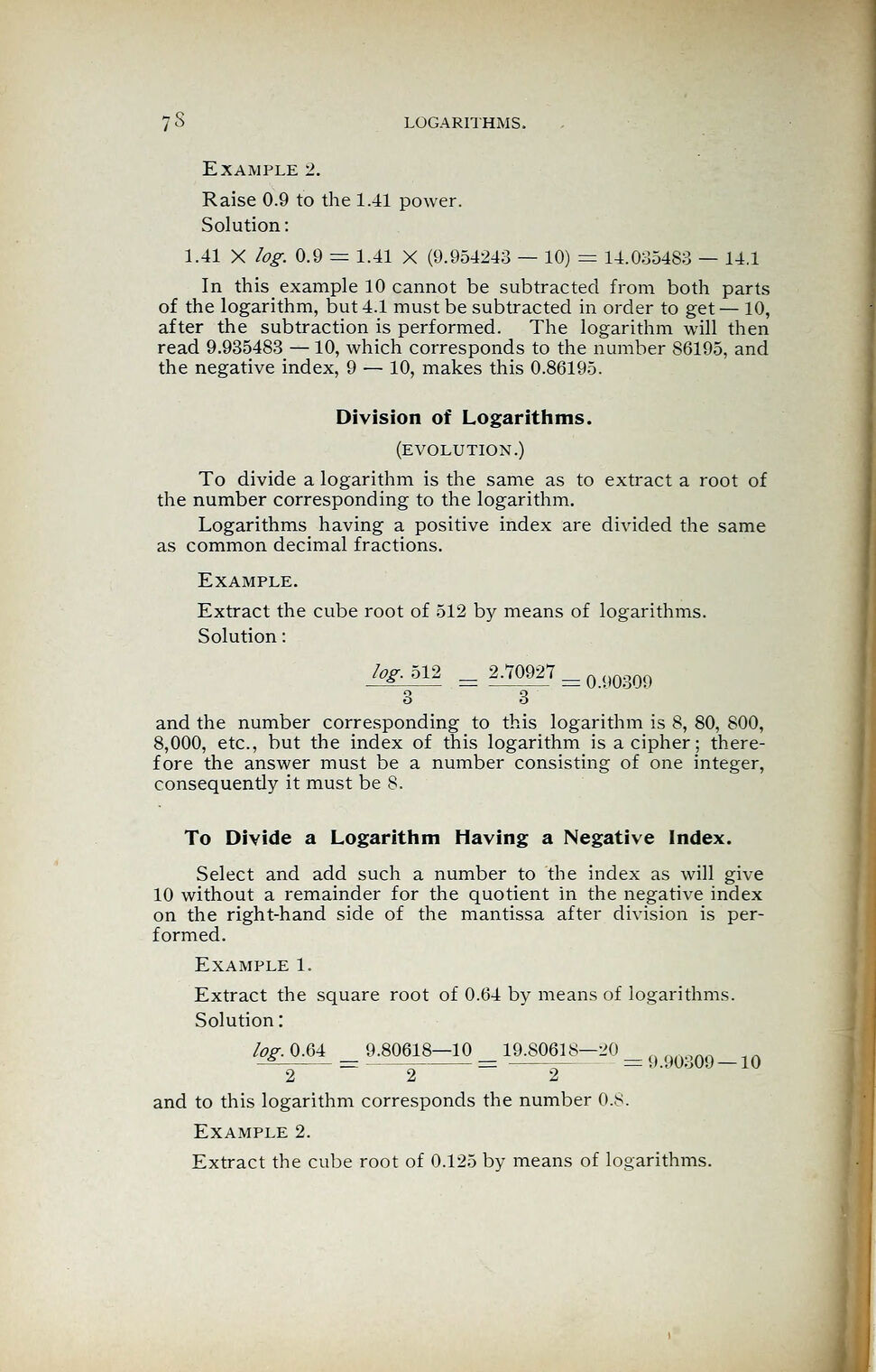
Full resolution (JPEG) - On this page / på denna sida - Logarithms - Multiplication of logarithms - Division of logarithms

<< prev. page << föreg. sida << >> nästa sida >> next page >>
Below is the raw OCR text
from the above scanned image.
Do you see an error? Proofread the page now!
Här nedan syns maskintolkade texten från faksimilbilden ovan.
Ser du något fel? Korrekturläs sidan nu!
This page has never been proofread. / Denna sida har aldrig korrekturlästs.
7 S LOGARITHMS.
Example 2.
Raise 0.9 to the 1.41 power.
Solution:
1.41 X log. 0.9 = 1.41 X (9.954243 — 10) = 14.085483 — 14.1
In this example 10 cannot be subtracted from both parts
of the logarithm, but 4.1 must be subtracted in order to get — 10,
after the subtraction is performed. The logarithm will then
read 9.935483 — 10, which corresponds to the number 86195, and
the negative index, 9 — 10, makes this 0.86195.
Division of Logarithms.
(EVOLUTION.)
To divide a logarithm is the same as to extract a root of
the number corresponding to the logarithm.
Logarithms having a positive index are divided the same
as common decimal fractions.
Example.
Extract the cube root of 512 by means of logarithms.
Solution
:
log. 512 _ 2.70927
0.90309
3 3
and the number corresponding to this logarithm is 8, 80, 800,
8,000, etc., but the index of this logarithm is a cipher; there-
fore the answer must be a number consisting of one integer,
consequently it must be 8.
To Divide a Logarithm Having a Negative Index.
Select and add such a number to the index as will give
10 without a remainder for the quotient in the negative index
on the right-hand side of the mantissa after division is per-
formed.
Example 1.
Extract the square root of 0.64 by means of logarithms.
Solution:
log. 0.64 _ 9.8061 8—10 _ 19.80618—20 _ 90309 _10
Z z z
and to this logarithm corresponds the number 0.8.
Example 2.
Extract the cube root of 0.125 by means of logarithms.
<< prev. page << föreg. sida << >> nästa sida >> next page >>